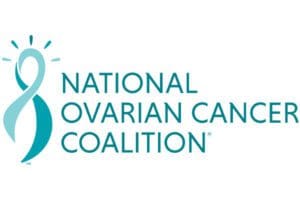Despite the seemingly endless talcum powder lawsuits lodged against them and the continued allegations being thrown their way, pharmaceutical giant Johnson & Johnson maintains that their popular talc-based baby powder is safe.
In a May 2020 announcement, J&J said that they remain “steadfastly confident in the safety of talc-based Johnson’s Baby Powder” and that the safety of their most popular product is backed by “decades of scientific studies by medical experts around the world.”
J&J also added that they “will continue to vigorously defend the product, its safety, and the unfounded allegations against it and the company in the courtroom.”
But even after several safety claims to reassure the consumers of their product’s safety, one cannot help but ask: is J&J’s talc-based baby powder truly safe? Does it actually cause ovarian cancer?
What’s Inside the J&J Baby Powder?
The main ingredient in J&J’s baby powder is talc, also known as talcum powder. On their website, J&J describes talc as a “naturally occurring mineral that is highly stable, chemically inert, and odorless.” The Food and Drug Administration (FDA) also explains that talc is “mined from the earth, composed of magnesium, silicon, oxygen, and hydrogen.”
Aside from baby powders, talcum can also be found in other cosmetic products like face and body powders, antiperspirants, toothpaste, soaps, drug tablets, paint, and even chewing gums.
According to J&J, talcum powder has been tested and proven safe by many studies and research conducted by medical experts across the globe. They also said that science and several clinical evidence have shown talcum powder “is accepted as safe for use in cosmetic and personal care products throughout the world.”
What Makes Talcum Powder Carcinogenic?
According to the National Cancer Institute, asbestos has been confirmed as a human carcinogen by the US Department of Health and Human Services (HHS), the US Environmental Protection Agency (EPA), and the International Agency for Research on Cancer (IARC) — the World Health Organization’s cancer research arm.
J&J is known to take great pride in the “high purity” of the cosmetic talc they use in their baby powder. However, in its purest form, talcum powder usually contains asbestos.
Moreover, asbestos — like talcum powder — is also a naturally occurring mineral. And because these two minerals are typically found close to each other in many talc mining sites, it makes talcum powder highly susceptible to asbestos contamination.
The Link Between Talcum Powder and Ovarian Cancer
Ovarian cancer is the most fatal cancer type that can develop in the female reproductive system. According to the Center for Disease Control and Prevention (CDC), ovarian cancer is a “group of diseases that originates in the ovaries or the related areas of the fallopian tubes and the peritoneum.”
In many of the talcum baby powder lawsuits, the female plaintiffs have claimed that they developed ovarian cancer due to talcum powder exposure. Most of the female plaintiffs have been using J&J’s baby powder for years — either for their babies or in their genital areas — and they believe their continued use of J&J’s talcum powder products led them to be diagnosed with ovarian cancer.
According to consumer advocacy organization Drugwatch, when J&J’s powder is often used in the genital area as part of a frequent feminine hygiene routine, the tiny talc particles can easily “travel through the vagina, uterus, and fallopian tubes to the ovaries.”
Once those talc particles have settled in the ovaries, they can stay there for a long time and may take years before they are dissolved. This can cause chronic inflammation of the ovaries and creates a favorable condition for cancerous tumors to develop over time.
What Do the Studies Say?
Several studies have been conducted to establish the link between talcum powder and ovarian cancer through the years. But while they all showed varying degrees of ovarian cancer risk after talcum powder exposure, the studies say one thing: the popular Johnson & Johnson baby powder increases the risk of ovarian cancer.
While useful in many industries, talcum powder is quite a huge concern in cosmetics, especially in many powder-based products. Most of the studies that have been conducted over the years showed that there is a significant risk of developing gynecological malignancies as a result of long-term talc use, the most common of which is ovarian cancer.
Here are some of the studies that link the use of cosmetic talcum powder and the development of ovarian cancer.
Cancer Prevention Research Study (2013) – According to a study by this prominent cancer research journal, there is “an increased risk of ovarian cancer between 20 and 30 percent for women who used talcum powder for intimate personal hygiene.”
The Cramer Study (2016) – Led by Harvard epidemiologist Dr. Daniel Cramer, the study found that “women who used talcum powder on their genitals and sanitary pads regularly were at more than three times the risk” of developing ovarian cancer.
The Schildkraut Study (2016) – In this study by Joellen M. Schildkraut that examined African American women, it found that those “who use talcum powder in their groin area have a 44% increased risk for ovarian cancer.”
Tisch Cancer Institute of Mount Sinai Hospital (2017) – In this study, it was reported that although there is a weak link, there is a “statistically significant association between genital use of talc and ovarian cancer.”
Ovarian Cancer Cohort Consortium (2020) – According to their analysis, the OC3 reported that “use of talcum powder on genitals is associated with a 24% increased risk of ovarian cancer.”
Symptoms of Ovarian Cancer
The American Cancer Society lists the following as the most common and persistent signs and symptoms of ovarian cancer:
- Urinary symptoms such as urgency (always feeling like you have to go) or frequency (having to go often)
- Pelvic or abdominal (belly) pain
- Trouble eating or feeling full quickly
- Bloating
- Abdominal (belly) swelling with weight loss
- Changes in a woman’s period, such as heavier bleeding than normal or irregular bleeding
- Pain during sex
- Upset stomach
- Fatigue (extreme tiredness)
- Constipation
- Back pain
Risk Factors of Ovarian Cancer
According to the National Cancer Institute, a risk factor is defined as “something that increases the chance of developing a disease.” In the case of ovarian cancer, the following risk factors can significantly influence your susceptibility to the disease.
- Old age
- Excessive and rapid weight gain
- Morbid obesity
- Unhealthy habits such as chain-smoking and heavy drinking
- Late or premature pregnancy
- Family history of ovarian cancer and other cancers such as breast cancer and colorectal cancer
- Undergoing postmenopausal hormone therapy hormone therapy
- Undergoing fertility treatment

Other Cancers Linked to Talcum Powder Exposure
Aside from ovarian cancer, mesothelioma and uterine cancer are also linked to talcum powder exposure. But while not enough substantial scientific evidence is available at the moment linking talcum powder use to these two, they are still illnesses that need to be taken seriously.
Talcum Powder and Mesothelioma
According to The Mesothelioma Center, mesothelioma is a “malignant tumor that is caused by inhaled asbestos fibers and forms in the lining of the lungs, abdomen, or heart.” For people who are diagnosed with this deadly illness, life expectancy is about 12 months at most after diagnosis.
The most common symptoms of mesothelioma include shortness of breath, respiratory complications, dry cough, chest or abdominal pain, pleural effusion (fluid around the lungs), fever or night sweats, weakness in the muscles, and fatigue.
The Mesothelioma Center explains how asbestos affects humans, and eventually, causes the development of mesothelioma. On their website, they show how mesothelioma progresses in the body.
- A person inhales or swallows microscopic airborne asbestos fibers.
- The asbestos fibers become lodged in the lining of the lungs, abdomen, or heart.
- Embedded fibers damage mesothelial cells and cause inflammation.
- Over time, tumors form on the damaged mesothelium, leading to mesothelioma.
But mesothelioma does not develop overnight. According to Drugwatch, mesothelioma is usually diagnosed 20-50 years after exposure to asbestos-contaminated talc. And because symptoms do not show straight away, it can be difficult to diagnose until it is already too late.
Talcum Powder and Uterine Cancer
The American Cancer Society (ACS) says that, so far, there is only one study that provides a substantial link between uterine cancer and talcum powder. Because of the limited data available, the ACS recommends conducting more studies before medical experts can categorically say that talcum powder does cause uterine cancer.
A 2010 study by Stalo Karageorgi found that perineal talcum powder use increases endometrial cancer risk. Endometrial cancer, the most common type of uterine cancer, is said to be caused by the inflammation of the uterus lining — called endometrium — due to excessive use of talcum powder and frequent exposure to talc-based powder products.
The researchers discovered that as women consistently dust their genital areas with talc-based baby powder, the likelihood of talc particles traveling through the vagina and into the uterus then settling in ovarian tissues and pelvic lymph nodes significantly increases.
The study, which assessed 66,028 women diagnosed with invasive endometrial adenocarcinoma between 1982 and 2004, concluded that “although no association was observed overall, the variation varied by menopausal status.”
The findings also showed that among postmenopausal women, “ever use of talcum powder was associated with a 21% increase in the risk of endometrial cancer, while regular use was associated with a 24% increase in risk.”
The researchers also observed that there is a “borderline increase in risk with increasing frequency of use” of talc-based baby powder.
However, since this is the only known existing study that looked into uterine cancer and talcum powder’s link, it is still not enough to say that talc use leads to uterine cancer.
The Talcum Powder Lawsuit Verdicts Through the Years
Judith Winkel v. Colgate-Palmolive (May 2015) – Winkel claimed that Colgate-Palmolive’s Cashmere Bouquet talcum powder caused her mesothelioma after using the product from 1961 until 1976. The jury awarded her $13 million, but before they could decide on the amount of additional punitive damages, her case had already been settled for an undisclosed amount.
Jacqueline Fox v. Johnson & Johnson (February 2016) – Fox was the first-ever female complainant to achieve a favorable ovarian cancer verdict against J&J. After using J&J’s talcum products religiously for 35 years, Fox was eventually diagnosed with ovarian cancer and died in October 2015. Four months later, a St. Louis jury awarded her $72 million. But in October 2017, this decision was reversed by the Missouri Court of Appeals.
Deborah Giannecchini v. Johnson & Johnson (October 2016) – Giannecchini had been using the Johnson & Johnson talcum powder on her genitals for about 40 years. As a result, she developed ovarian cancer and was diagnosed in 2016 to have an 80% chance of dying in the next two years. Fortunately for Giannecchini, the jury ruled in favor of her and awarded her roughly $70 million and an additional $2 million paid by co defendant Imerys, one of J&J’s major talc suppliers.
Philip Depoian v. Whittaker, Clark & Daniels (October 2016) – Depoian used to frequent the barbershop his father worked at and claimed that his mesothelioma diagnosis was a result of inhaling talc particles and asbestos exposure from talcum powders in his father’s workplace. A Los Angeles jury eventually ruled in favor of him and awarded him $18 million to be paid by talc supplier Whittaker, Clark & Daniels.
Lois Slemp v. Johnson & Johnson (May 2017) – Slemp alleged that her ovarian cancer is caused by J&J’s talcum powder products that she had been using for over 40 years. A St. Louis jury awarded her a total of $110 million in compensatory and punitive damages, but the ruling was reversed in October 2019.
Eva Echeverria v. Johnson & Johnson (August 2017) – Echeverria claimed that her continued talcum powder use for over 40 years caused her to develop ovarian cancer. A California jury ruled in favor of her and she was awarded $417 million but she died shortly after, the following month after she won her case. In 2017, the verdict was overturned.
Richard Booker v. Imerys Talc America (December 2017) – Booker sued talc supplier Imerys alongside Dexter Midland Chemical Co., Walter N. Boysen Co., and Vanderbilt Minerals after he was diagnosed with mesothelioma as a result of his constant exposure to asbestos-contaminated asbestos-contaminated talc found in the paint he was making when he was still working for Dexter Midland and Boysen. Booker died in 2016 but he was only awarded over $22 million in damages by a California jury about a year after his death.
Stephen Lanzo III v. Johnson & Johnson (April 2018) – Lanzo III sued J&J and its talc supplier Imerys after he developed mesothelioma from constant use of J&J’s baby powder and Shower to Shower for years. A New Jersey jury eventually awarded Lanzo III $117 million in damages, but this verdict was later overturned in April 2021 to rule in favor of J&J.
Missouri class action lawsuit (July 2018) – Twenty-two women were behind this landmark class-action lawsuit, and all of them claimed that J&J’s asbestos-contaminated talcum baby powder had caused them to develop ovarian cancer. In total, a St. Louis jury awarded them a whopping $4.69 billion in damages. J&J appealed the ruling, but the decision was not reversed and the initial verdict was upheld.
Douglas Barden et al v. Johnson & Johnson (September 2019) – Plaintiffs Douglas Barden, Will Ronning, D’Angela Mcneill-George, and David Etheridge claimed that they got mesothelioma after they ingested asbestos and talc particles from using the Johnson & Johnson talcum powder. A New Jersey jury awarded them $37.2 million in compensatory damages and an additional $750 million in punitive damages.
Christina Prudencio v. Johnson & Johnson (August 2021) – Plaintiff claimed that her long-term J&J talcum powder use led to her mesothelioma diagnosis. She was eventually awarded by a California jury with $26.5 million and an additional $100,000 million in punitive damages.
Latest Updates on the Talcum Powder Lawsuits
The talcum powder class action and individual lawsuits are not yet over, but the litigation has come to a temporary halt while J&J subsidiary LTL Management awaits its bankruptcy ruling–a move many talcum powder plaintiffs consider as a delaying tactic from J&J to avoid accountability.
This may be a classic case of “justice delayed is justice denied,” but for the plaintiffs of the remaining 19,000 untried talcum powder cases, they can only remain hopeful. After all, the outcome of their lawsuits is still anyone’s guess at this point.
So far, more than 35,000 talcum powder cases have been filed in federal and state courts across the United States.
As for J&J, they can only hope that the odds will continue to be in their favor in future legal proceedings. The company may have recently had a favorable ruling that allowed LTL Management to proceed with its bankruptcy case, but the talcum powder litigation is not going to end anytime soon.
Either way, both parties surely intend to win at whatever cost. But until when can the legal battle go on? Time can only tell.
Will J&J Pull Out Their Baby Powder Products From the Market?
J&J has already discontinued the sale of their talc-based baby powder in the United States and Canada, but in many parts of the world, their baby powder remains on most supermarket shelves. To date, J&J has not yet expressed any plans of pulling out their baby powder from more retailers.
In October 2019, J&J announced that they will be recalling 33,000 bottles of their baby powder distributed in North America after the FDA found traces of asbestos in samples taken from a single bottle included in that batch.
Here is exactly what J&J had to say about the recall, taken directly from their official website:
“Out of an abundance of caution, Johnson & Johnson Consumer Inc. (JJCI) announced that it is initiating a voluntary recall in the United States of a single lot of its Johnson’s Baby Powder in response to a U.S. Food and Drug Administration (FDA) test indicating the presence of sub-trace levels of chrysotile asbestos contamination (no greater than 0.00002%) in samples from a single bottle purchased from an online retailer. Despite the low levels reported and in full cooperation and collaboration with the FDA, JJCI is initiating this voluntary recall of Lot #22318RB of Johnson’s Baby Powder, from which the tested sample was taken.”
“In parallel, JJCI has immediately initiated a rigorous, thorough investigation into this matter, and is working with the FDA to determine the integrity of the tested sample, and the validity of the test results. At this early stage of the investigation, JJCI:
- Cannot confirm if cross-contamination of the sample caused a false positive.
- Cannot confirm whether the sample was taken from a bottle with an intact seal or whether the sample was prepared in a controlled environment.
- Cannot confirm whether the tested product is authentic or counterfeit.”
“JJCI has a rigorous testing standard in place to ensure its cosmetic talc is safe and years of testing, including the FDA’s testing on prior occasions–and as recently as last month — found no asbestos. Thousands of tests over the past 40 years repeatedly confirm that our consumer talc products do not contain asbestos. Our talc comes from ore sources confirmed to meet our stringent specifications that exceed industry standards. Not only do we and our suppliers routinely test to ensure our talc does not contain asbestos, but our talc has also been tested and confirmed to be asbestos-free by a range of independent laboratories, universities, and global health authorities.”
Takeaway Points
Cancer, regardless of what type it is, will significantly alter the course of a person’s life. If you or a loved one have used J&J’s baby powder or other talc-based powders, and have reasonable cause to believe that you developed ovarian cancer because of it, reach out to us to see if you can still participate in the ongoing talcum powder litigation.








